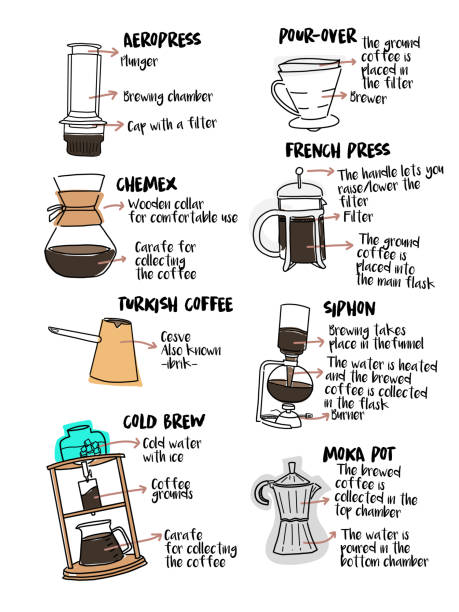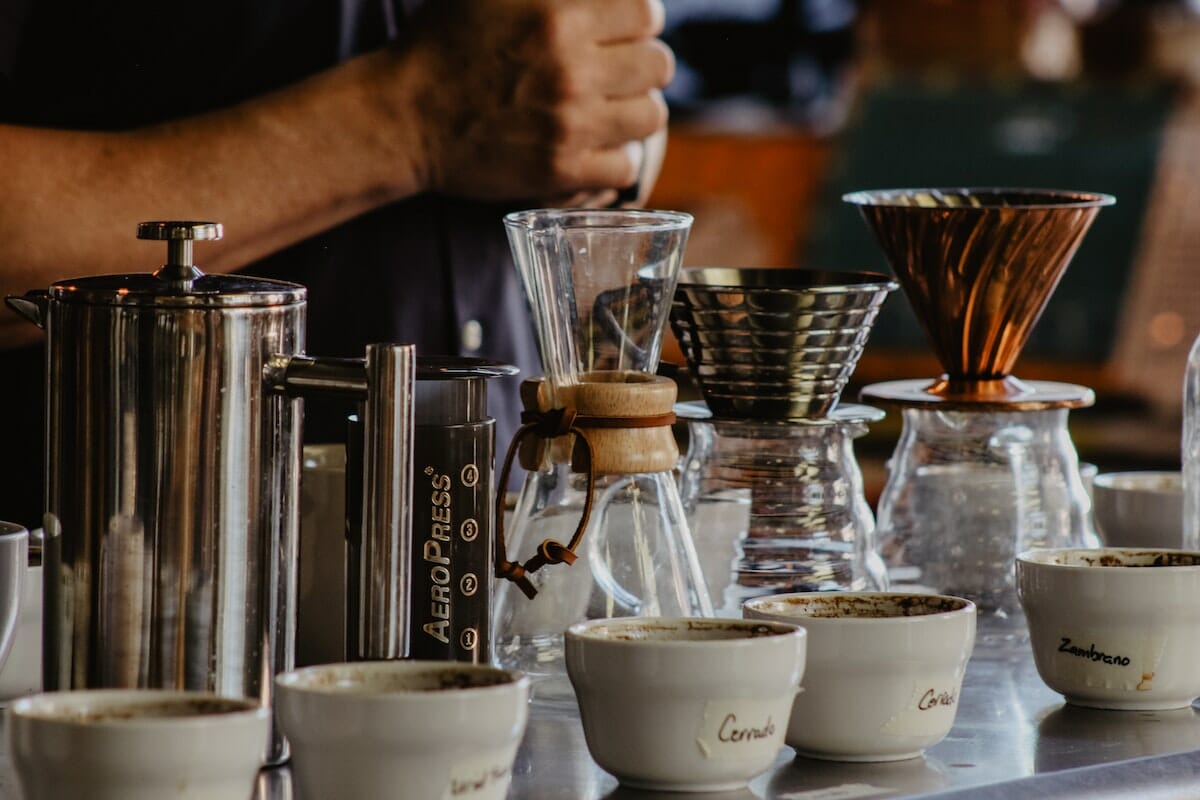Revealing the Scientific Research Behind Different Coffee Brewing Methods and Their Benefits
Revealing the Scientific Research Behind Different Coffee Brewing Methods and Their Benefits
Blog Article
Checking Out the Art of Coffee Brewing: A Comprehensive Guide to Developing Your Cup
The art of coffee developing is a complex discipline that merges scientific research with personal expression, where the selection of beans, water quality, and developing approaches converge to produce a polished sensory experience. Understanding the nuances of numerous coffee beans, particularly the differences in between Arabica and Robusta, is necessary for any kind of fanatic. The option of ideal equipment and meticulous attention to brewing specifications can substantially affect the final result. As we check out these elements, one must think about just how even small adjustments can lead to profound changes in flavor and aroma-- what might these modifications disclose about your suitable cup?
Understanding Coffee Beans
To genuinely value the art of coffee developing, one have to initially recognize the fundamental component: coffee beans. These tiny seeds, commonly obtained from the Coffea plant, are vital in determining the taste account, scent, and overall quality of the made drink. Coffee beans mainly fall into two classifications: Arabica and Robusta. Arabica beans, understood for their fragile tastes and greater acidity, are frequently favored by aficionados. On the other hand, Robusta beans have a stronger, more bitter preference and higher high levels of caffeine content, making them ideal for espresso blends.

Furthermore, the handling approach-- whether washed, natural, or honey-- impacts the beans' last taste. Understanding these aspects permits brewers to select the ideal beans that straighten with their preferred taste profile, ultimately improving the coffee developing experience. coffee brewing methods. This comprehension is necessary for anybody desiring understand the craft of brewing the ideal mug of coffee
Brewing Methods Clarified
Numerous enthusiasts discover that the selection of developing technique substantially influences the final flavor and scent of their coffee. Each approach harnesses different removal strategies, influencing the coffee's character and richness.
Drip brewing, one of one of the most preferred methods, uses a maker to trickle warm water with ground coffee, creating a consistent and clean cup. French press, on the various other hand, submerses coffee grounds in warm water, permitting a fuller body and even more robust flavor, as oils and fine bits continue to be in the brew.
Pour-over developing uses a meticulous technique, where water is manually put over coffee grounds, permitting for exact control over removal time and temperature level, leading to a brilliant and nuanced cup.
Coffee, a focused coffee brewed under stress, is understood for its strong taste and velvety texture, functioning as the base for different coffee drinks, consisting of lattes and cappuccinos.
Important Tools Required
The foundation of any kind of successful coffee brewing procedure exists in quality devices customized to your preferred technique. A reliable coffee grinder is vital; freshly ground beans considerably boost taste and aroma.
Next, consider your developing tool. Options range from drip coffee manufacturers and pour-over setups to French presses and espresso devices. Each technique uses distinctive taste accounts and brewing techniques, so choose one that lines up with your taste preferences.
A precise scale is also vital, permitting you to measure coffee and water accurately, which is vital for consistency. Furthermore, a thermostat can aid check water temperature level, as it directly influences extraction quality.
Mastering Water Quality
The quality of water used in developing coffee plays a substantial duty in establishing the final taste account of the cup. Various aspects add to water high quality, including mineral content, pH level, and total pureness. Ideally, water should be devoid of impurities and impurities, as these can adversely affect the preference of coffee.
Minerals, such as calcium and magnesium, improve the extraction of tastes from the coffee premises, while preserving a balanced pH degree-- around 6.5 to 7.5-- is necessary for ideal extraction. Water that is too soft might bring about under-extraction, leading to sour or weak tastes, while extremely difficult water can create a bitter or extreme cup.
For the very best outcomes, filtered water is suggested, as it reduces the visibility of chlorine and other undesirable compounds typically discovered in faucet water. Furthermore, consider utilizing water with a Complete Dissolved Solids (TDS) level in between check my blog 150-200 ppm, which is typically ideal for coffee brewing. By understanding water high quality, you can lay a solid foundation for attaining a continually excellent mug of coffee, allowing the special qualities of your selected beans to shine through.

Tips for Flavor Improvement
Enhancing the taste of your coffee can significantly raise your developing experience and highlight the distinct subtleties of your picked beans. To achieve this, think about numerous key elements that affect preference.
To start discover here with, the grind size plays a critical role. A finer grind boosts extraction, resulting in bolder flavors, while a coarser grind returns a milder mug. coffee brewing methods. Adjust your grind according to your developing approach to attain optimal results
Secondly, experiment with brew time. Over-extraction can cause anger, while under-extraction lead to a sour taste. Go for a brew time that balances these extremes, normally in between two to four minutes, depending upon your approach.
Brewing with water that is too hot can scorch the coffee, while water that is also amazing might fall short to draw out sufficient flavor. In verdict, the art of coffee developing is a diverse method that calls for a deep understanding of various components, including bean choice, developing techniques, and water top quality. By integrating these parts, coffee fanatics can raise their developing methods, resulting in a mug that not only pleases personal choices yet likewise showcases the abundant complexity of coffee tastes.
The art of coffee brewing is a diverse discipline that merges scientific research with personal expression, where the option of beans, water quality, and brewing approaches converge to produce a polished sensory experience.To really value the art of coffee developing, one should initially understand the foundational component: coffee beans. Brewing more with water that is as well warm can blister the coffee, while water that is as well cool may fall short to extract appropriate taste. In conclusion, the art of coffee brewing is a diverse practice that requires a deep understanding of different components, including bean choice, developing methods, and water high quality. By incorporating these components, coffee lovers can boost their brewing techniques, resulting in a mug that not just pleases individual choices however additionally showcases the rich complexity of coffee tastes.
Report this page